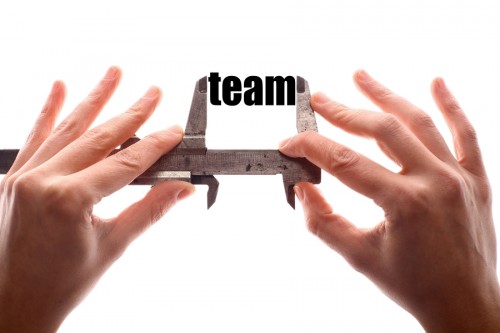Measuring team performance isn’t easy. We know when they achieve great results, but how can we know what factors contribute the most to team effectiveness? Until recently, the only tools used to measure performance have been observation, interviews, and surveys to understand effective team behaviors.
How do we know that social sensitivity outweighs all other factors in team effectiveness? Scientists are using new technology to measure the degree of social interaction in organizations.
Professor Alex Pentland’s Human Dynamic Lab at MIT invented a sociometric badge, worn on people’s clothing. It has the technology to measure the tone of voice a person uses, whether people are facing one another while talking, how much they gesture, how much they talk, listen, and interrupt one another.
Measuring team performance scientifically has more to do with actions than words. A sociometer doesn’t record the words people say, as they are determined irrelevant in measures of interactions. Here are some of their findings:
- Successful team members generate a large number of ideas in short contributions to conversations. No one goes on for great length.
- They engage in “dense interactions;” that is, they alternate between advancing their own ideas and responding to the contributions of others with “good,” “right,” “what?” and other short comments that signal consensus on an idea’s value, good or bad.
- Successful members contribute ideas and reactions, taking turns more or less equally, ensuring a wide diversity of ideas.
Those three elements of interaction were more important than any other factor in explaining excellent performance of the best teams. In fact, they were about as important as all the other factors — individual intelligence, technical skills, members’ personalities and anything else — combined.
Team-Based Social Interactions
Human interaction in teams is so powerful that increasing it just a little improves group performance a lot. Here’s a case study, reported in Geoff Golvin’s book, Humans Are Underrated: What High Achievers Know That Brilliant Machines Never Will (Portfolio, 2015):
In a Bank of America call center of 3,000 employees, productivity vastly improved simply by changing the schedule of break times so that workers spent more time together socially. When the bank switched to aligned team breaks, productivity rose and turnover fell. Performance improved as workers had more time to interact with each other. The bank estimated a savings of $15 million a year.
In my work in organizations, I’ve seen companies spend a lot of money to try to boost performance. Here, however, is an example of how aligning breaks so that more team members can interact socially does the trick. It didn’t cost a penny, and it saved $15 million in turnover and lost productivity.
How can you encourage more social interaction in your company? What’s been your experience? I’d love to hear your thoughts. You can reach me here or on LinkedIn.

Did You Enjoy This Article?
Join thousands of other smart business owners like yourself & get our Proffittable Times newsletter.
It's filled with actionable content you can apply immediately.
Sign up now to get started!
– Coach Nancy










